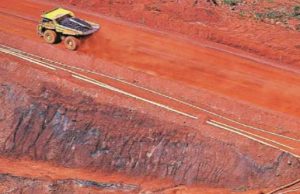 Few issues need deep digging to find their long-lasting solutions. Mining is one of them. The latest developments in Chhattisgarh could be an ideal case in point to understand different angles of the problem in the sector. Iron ore mining major National Mineral Development Corporation (NMDC), which had earlier halted production at Bailadilla region in Chhattisgarh due to protests by local tribals, resumed its operations at the mining complexes of Kirandul and Bacheli segments in the state on June 13. Almost a week-long agitation had ended after N Baijendra Kumar, CMD, NMDC, met Chhattisgarh Chief Minister Bhupesh Baghel and senior officials of the State government. The development was not new or first of its kind.
Few issues need deep digging to find their long-lasting solutions. Mining is one of them. The latest developments in Chhattisgarh could be an ideal case in point to understand different angles of the problem in the sector. Iron ore mining major National Mineral Development Corporation (NMDC), which had earlier halted production at Bailadilla region in Chhattisgarh due to protests by local tribals, resumed its operations at the mining complexes of Kirandul and Bacheli segments in the state on June 13. Almost a week-long agitation had ended after N Baijendra Kumar, CMD, NMDC, met Chhattisgarh Chief Minister Bhupesh Baghel and senior officials of the State government. The development was not new or first of its kind.
In fact, the country witnesses such instances on regular basis where local population opposes big development projects for various reasons. Including the religious angle. Tribals of Dantewada’s Bailadila Hills, for example, claim the shrine of a goddess is located on one the hills and is associated with their faith. Moreover, the affected communities don’t want to give up the forests since their lives are dependent on them. Tribals also share a cultural bond with the jungles, which are generally mineral-rich. The Bailadila hills, it’s well known, have world-class iron-ore reserves.The mining companies on their part, say that these resources are needed to fuel the country’s economic engine.
Politicians have their own dilemmas in such cases. While tribals are their voters, business houses fund them during elections. To woo the prospective voters, the Chhattisgarh CM had ordered an inquiry Into the bogus no objection certificates acquired from gram sabhas and illegal felling of trees in the area. Since the Bailadila hill range is a part of Schedule V of the Constitution, it is governed by the provisions of Panchayats (Extension to Scheduled Areas) Act 1996, which makes the consent of gram sabhas mandatory for any development activity. Amid all the chaos, NMDC was bearing a loss of 12 crore a day due to the agitations until its executives convinced the Chhattisgarh CM that the firm will also undertake welfare work in the area.
Another area of concern is the vulnerability of people working in the mines. The disaster that struck a coal mine at Ksan in Meghalaya’s Jaintia Hills district on December 13 last year, trapping at least 13 workers, was yet another shocking reminder that India continues to allow Dickensian mining practices. The country being home to some of the worst mine disasters, such as Chasnala near Dhanbad in 1975 in which more than 370 people were killed, the full spectrum of mining activity should be tightly regulated.
A sustainable mining policy, as laid out in the National Mining Policy 2019, may add to the workers’ safety, generate more employment and benefit the environment. Mining in India also requires an upgrade in technology to make it safer and cleaner. Last but not the least, the governments and the companies must follow the rules when it comes to acquiring consent, and also use the district mineral funds, a neat pile of cash contributed by mining firms, for things that communities require and not just what the authorities think to be useful.













